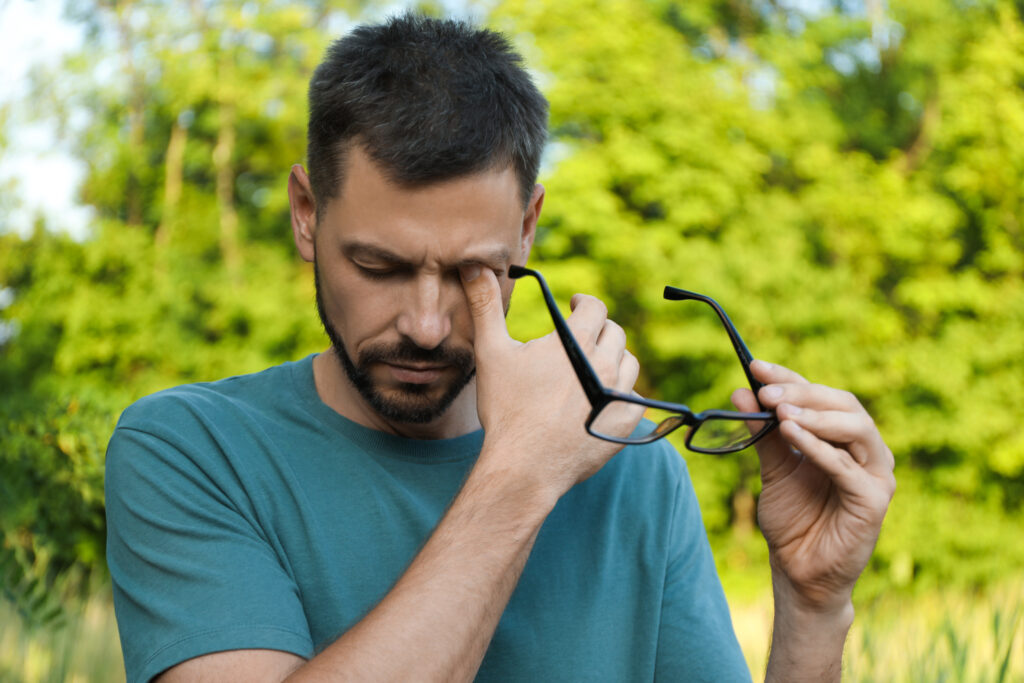Get Your Eyes Ready for Allergy Season

Spring is a time of renewal, but for millions of people, it also signals the return of eye allergy season. Itchy, watery, and red eyes become a daily struggle as pollen counts rise and airborne allergens trigger uncomfortable reactions. While many associate allergies with sneezing and congestion, eye allergies, also known as allergic conjunctivitis, can be just as disruptive. The good news is that with the right approach, you can minimize symptoms and protect your vision throughout the season.
Understanding Eye Allergies and Their Triggers
Eye allergies occur when the immune system overreacts to allergens, treating harmless substances as threats. This leads to the release of histamines, which cause inflammation, redness, and excessive tearing. While pollen from trees, grass, and weeds is the most common culprit in seasonal allergies, other irritants such as dust mites, pet dander, mold spores, and air pollution can also trigger eye discomfort.
For many people, allergies are seasonal, flaring up in the spring and fall when pollen levels are at their highest. However, indoor allergens like dust and mold can lead to year-round symptoms, making it crucial to address both environmental and seasonal factors.
How Allergies Affect Your Eyes
The symptoms of eye allergies can range from mild irritation to severe discomfort, making everyday activities challenging. Redness, swelling, itching, burning, excessive tearing, and sensitivity to light are the most common complaints. Some people also experience blurred vision due to excessive mucus buildup, which can coat the eyes and make it difficult to focus.
Unlike infections, which often affect only one eye, allergic reactions typically impact both eyes simultaneously. This is because allergens are airborne, affecting both eyes at the same time. Rubbing your eyes may provide momentary relief, but it can worsen symptoms by spreading allergens and increasing inflammation.
Preventing and Managing Eye Allergies
Since avoiding allergens entirely is nearly impossible, prevention and symptom management are key to surviving allergy season. Simple lifestyle changes and protective habits can significantly reduce exposure and discomfort.
One of the most effective ways to minimize symptoms is reducing direct contact with allergens. When pollen counts are high, staying indoors with windows closed can help. Running an air purifier and keeping air conditioning filters clean reduces airborne irritants inside the home. If you need to go outside, wearing wraparound sunglasses can shield your eyes from pollen and other allergens.
Maintaining proper eye hygiene also plays a crucial role in preventing irritation. Washing your hands frequently and avoiding touching your eyes can prevent allergens from spreading. Rinsing your face and eyelids after being outdoors helps remove pollen particles before they have a chance to trigger symptoms. For those who wear contact lenses, switching to daily disposables can help reduce allergen buildup on the lenses.
Artificial tears and lubricating eye drops provide relief by flushing out allergens and keeping the eyes hydrated. For mild cases, over-the-counter antihistamine eye drops can effectively reduce itching and redness. If symptoms are persistent or severe, prescription-strength medications may be necessary.
The Link Between Dry Eyes and Allergies
People who suffer from chronic dry eye syndrome often experience worsened allergy symptoms. This is because a lack of tear production makes it harder for the eyes to flush out irritants, leading to increased discomfort. Allergy medications, particularly oral antihistamines, can sometimes exacerbate dryness, making it important to choose the right treatment. Using preservative-free artificial tears can help maintain moisture and relieve irritation caused by allergens.
Applying cold compresses to the eyes can also reduce inflammation and provide soothing relief. Unlike warm compresses, which increase circulation, cold compresses help constrict blood vessels, minimizing swelling and redness.
When to See an Eye Doctor
While most allergy-related eye symptoms can be managed at home, some cases require professional evaluation. If redness and irritation persist despite treatment, or if symptoms are accompanied by pain, discharge, or vision changes, it’s important to rule out other conditions such as infections or underlying eye diseases.
A comprehensive eye exam can help determine whether allergies, dry eye syndrome, or another issue is causing discomfort. In some cases, allergists and eye doctors work together to create a customized treatment plan, particularly if symptoms are severe or not responding to typical therapies.
Taking Control of Your Eye Health This Allergy Season
Although allergy season can be frustrating, it doesn’t have to take a toll on your vision and daily comfort. By taking proactive steps to minimize exposure, using the right eye care products, and seeking medical guidance when needed, you can enjoy the season with clear, comfortable eyes.
At OptiCare Health, we provide expert eye care services, including comprehensive exams and personalized treatment plans for allergy-related eye conditions. If seasonal allergies are affecting your vision and quality of life, schedule an appointment with us today. Let our team help you find relief and keep your eyes healthy throughout the year.
